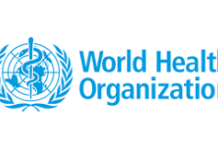A recent study published in the *Journal of Clinical Sleep Medicine* reveals that diabetes patients with sleep-disordered breathing face significantly increased mortality risks. The research highlights the severe impact of sleep-disordered breathing (SDB) on diabetes patients, showing a notable rise in mortality risk associated with this condition. It underscores the urgent need for effective management of SDB, an often-overlooked aspect of diabetes care.
As reported by medicaldialogues.in, the study found that patients with diabetes and low average oxygen saturation levels (below 91.4%) had a markedly higher risk of both all-cause and cardiovascular mortality, with adjusted hazard ratios (aHR) of 0.52 and 0.44, respectively. Conversely, higher apnea-hypopnea and oxygen desaturation indices (above 31 and 13.3, respectively) were linked to increased all-cause mortality, with an adjusted hazard ratio of 1.58.
Sleep-disordered breathing includes conditions like obstructive sleep apnea (OSA) that disrupt normal breathing during sleep. Despite its frequent occurrence alongside diabetes mellitus (DM), there is limited data on its effect on mortality in diabetes patients. To address this, Teodora Vichova from the Department of Pathophysiology, Third Faculty of Medicine, Charles University, Prague, and her team examined the impact of SDB and DM on mortality rates. They analyzed data from the Sleep Heart Health Study, which included 5,780 patients with both polysomnography and mortality records, among them 453 with diabetes. They used survival analysis and proportional hazard regression models to determine the adjusted hazard ratios for mortality.
Key findings from the study include:
– Diabetes patients with an average SpO2 above 91.4% had a significantly lower risk of all-cause (aHR 0.52) and cardiovascular mortality (aHR 0.44) compared to those with lower SpO2 levels.
– Higher apnea-hypopnea index (>31) and oxygen desaturation index (>13.3) were associated with increased all-cause mortality (aHR 1.58) in diabetes patients.
– Sleep efficiency and the proportion of rapid-eye movement (REM) sleep did not impact mortality in diabetes patients, differing from individuals without diabetes, where lower sleep efficiency (<81.4%) and REM sleep (<14.9%) were linked to higher all-cause mortality.
The researchers emphasized the critical need for increased awareness and proactive management of sleep-disordered breathing in diabetes patients. “Addressing this crucial aspect of patient health can significantly improve survival rates and quality of life for those with diabetes and sleep-related breathing disorders,” they concluded.
























